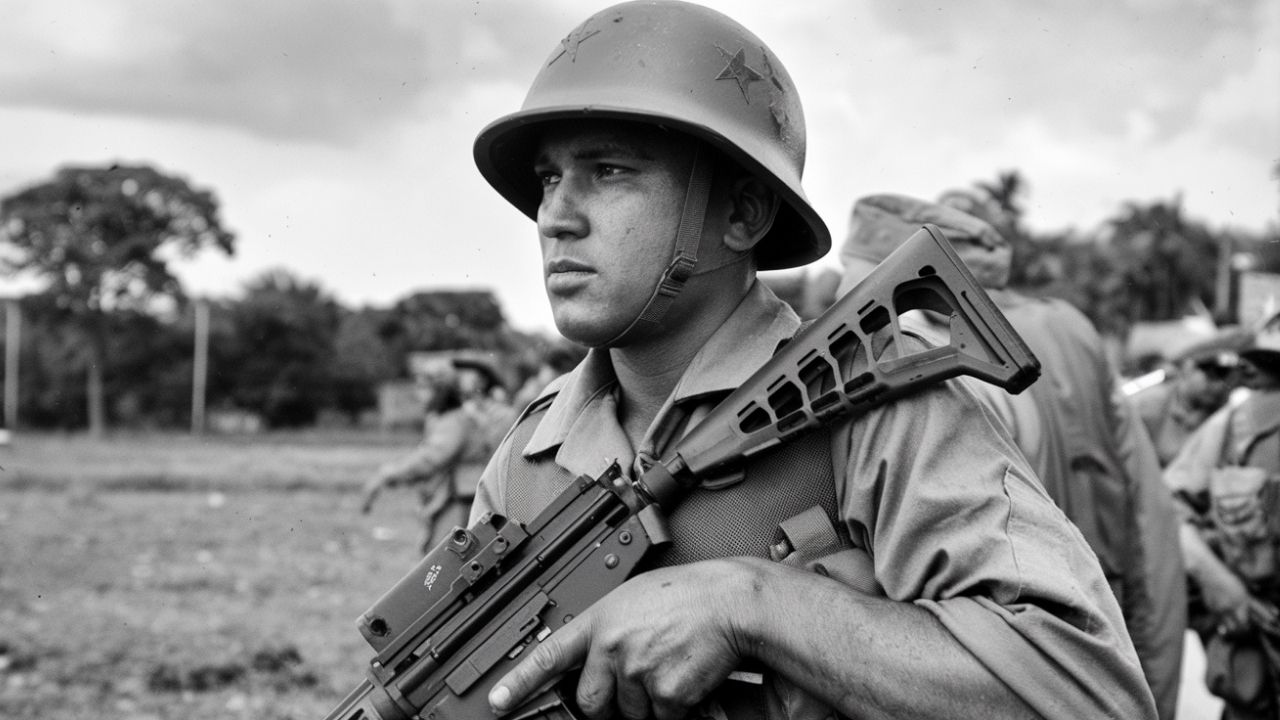
Why did Cuba invade the Dominican Republic? The Cuban invasion of the Dominican Republic in 1959 was driven by Fidel Castro's desire to spread revolutionary ideals throughout Latin America. After successfully overthrowing the Batista regime in Cuba, Castro aimed to inspire similar uprisings against dictatorships in the region. The Dominican Republic, under the rule of Rafael Trujillo, became a prime target due to its oppressive government. Castro believed that by supporting anti-Trujillo forces, he could ignite a broader movement for freedom and justice. This invasion, although ultimately unsuccessful, highlighted the intense political climate of the time and the lengths to which revolutionary leaders would go to promote their vision of change.
Key Takeaways:
- Cuba tried to invade the Dominican Republic in 1959, but it didn't work out. This event showed how countries in the Caribbean were involved in political struggles and how the United States got involved too.
- The invasion didn't succeed, but it had a big impact. It made the relationship between Cuba and the Dominican Republic worse, and it also affected the Cold War tensions in Latin America.
Cuban Invasion of The Dominican Republic: An Overview
The Cuban invasion of the Dominican Republic is a lesser-known but fascinating chapter in Caribbean history. This event, filled with political intrigue, military maneuvers, and international repercussions, offers a glimpse into the complex relationships between neighboring countries.
The Background of the Invasion
Understanding the context of the invasion helps to grasp its significance. The political climate in the Caribbean during the mid-20th century was turbulent, with many nations experiencing upheaval.
- The invasion occurred in 1959, shortly after Fidel Castro's rise to power in Cuba.
- The Dominican Republic was under the dictatorship of Rafael Trujillo, a regime known for its brutality.
- Tensions between Cuba and the Dominican Republic had been escalating due to ideological differences.
- The invasion was part of Castro's broader strategy to spread revolutionary ideals across Latin America.
- Trujillo's government had been actively opposing Castro's regime, providing support to anti-Castro exiles.
Key Players in the Invasion
Several key figures played crucial roles in the invasion, each with their own motivations and objectives.
- Fidel Castro, the Cuban revolutionary leader, orchestrated the invasion.
- Rafael Trujillo, the Dominican dictator, was the primary target of the invasion.
- Enrique Jiménez Moya, a Dominican exile, led the invading forces.
- The invasion force consisted of around 200 men, mostly Dominican exiles and Cuban revolutionaries.
- The United States was indirectly involved, monitoring the situation closely due to its interests in the region.
The Course of the Invasion
The invasion itself was a dramatic and intense series of events, marked by both strategic planning and unexpected challenges.
- The invasion began on June 14, 1959, with the landing of forces in the Dominican Republic.
- The invaders aimed to incite a popular uprising against Trujillo's regime.
- Initial landings took place in the northern region of the Dominican Republic, near Constanza.
- The invaders faced immediate resistance from Trujillo's well-prepared military forces.
- Despite initial setbacks, the invaders managed to establish a foothold in the region.
The Aftermath and Impact
The invasion had significant consequences for both Cuba and the Dominican Republic, as well as for the broader geopolitical landscape of the Caribbean.
- The invasion ultimately failed, with most of the invaders being captured or killed.
- Trujillo's regime used the invasion to justify further crackdowns on dissent within the Dominican Republic.
- The failure of the invasion did not deter Castro from continuing his efforts to support revolutionary movements in Latin America.
- The invasion strained relations between Cuba and the Dominican Republic even further.
- The United States increased its surveillance and intervention in the Caribbean to counteract the spread of communism.
Legacy of the Invasion
The Cuban invasion of the Dominican Republic left a lasting legacy, influencing future events and shaping the political landscape of the region.
- The invasion is remembered as a bold but ultimately unsuccessful attempt to overthrow a dictatorship.
- It highlighted the willingness of Castro's Cuba to intervene in the affairs of neighboring countries.
- The event is often cited as an example of the Cold War tensions that permeated Latin America during this period.
- The invasion contributed to the eventual downfall of Trujillo, who was assassinated in 1961.
- The legacy of the invasion continues to be studied by historians and political analysts, offering insights into the dynamics of revolutionary movements and international relations.
Reflecting on the Cuban Invasion of the Dominican Republic
The Cuban invasion of the Dominican Republic in 1959 remains a significant event in Caribbean history. This bold attempt by Fidel Castro's forces to overthrow Rafael Trujillo's dictatorship highlighted the intense political climate of the era. Despite its failure, the invasion showcased the determination of Cuban revolutionaries to spread their ideology. It also underscored the complex relationships between neighboring countries during the Cold War. Understanding these events helps us appreciate the intricate dynamics that shaped modern Caribbean politics. The invasion's legacy continues to influence regional interactions and offers valuable lessons on the impact of revolutionary movements. By examining these historical moments, we gain a deeper appreciation for the struggles and aspirations that have defined the Caribbean's path to the present day.
Frequently Asked Questions
Was this page helpful?
Our commitment to delivering trustworthy and engaging content is at the heart of what we do. Each fact on our site is contributed by real users like you, bringing a wealth of diverse insights and information. To ensure the highest standards of accuracy and reliability, our dedicated editors meticulously review each submission. This process guarantees that the facts we share are not only fascinating but also credible. Trust in our commitment to quality and authenticity as you explore and learn with us.
